The dual hype surrounding both the Oreshnik ‘secret weapon’ and Ukraine’s ATACMS/Storm Shadow strikes on Russian territory has died down, to reveal the continuing pattern of Russian troop advancement on every front.
A new graph has highlighted the accelerating territorial captures in square kilometers of the Russian forces this year from April to November:
From Lost Armour—note the dip in August represents losing Kursk territory:
The mood has turned absolutely dour in the shill media which had been doing its desperate best for months to prop up Ukraine’s hopeless cause:
The conversation has entirely turned toward how to wrap the war up, with many ‘insiders’ in the West now claiming all internal debate revolves around how to convince Zelensky to give concessions, while still retaining some form of ‘dignity’ for Ukraine—which is just another way of saying, how to save face, and present the loss as at least a partial ‘victory’.
This has naturally led to Trump’s admin picks being a particular focal point as bellwethers of what we can expect from Trump’s approach toward ‘settling’ the war. Unfortunately, some of the recent signals are getting worse in this regard, and seem to indicate escalation as the plan.
For instance, Robert Wilkie, who has been appointed to lead Trump’s Pentagon transition team, spelled out exactly how he believes Trump’s team will approach dealing with Putin from day one. He admits he’s not speaking officially for Trump on this, but given that he’s literally leading the Pentagon transition team, it would seem his words carry some weight on this count. Notably, he says that if Russia remains defiant, Trump will majorly increase aid to Ukraine, counter to the “isolationist” ideas about abandoning Ukraine to its druthers:
Trump's War Cabinet: Let's order Putin to stop. Otherwise, aid to Ukraine will get even bigger.
Donald Trump will increase aid to Ukraine if Russian Federation threatens the Americans with a crushing response. The US already has the experience of killing 300 Russian soldiers in Syria.
🔴Robert Wilkie, a member of the newly elected US president's team, who is preparing a roadmap for the Pentagon's actions over the next four years, said this in an interview with the BBC.
Another “top Trump ally” said the following:
A top Senate ally of President-elect Donald Trump poured cold water over the idea of negotiating a peace deal between Russia and Ukraine, saying the Kremlin couldn’t be trusted and would see any peace proposals as a sign of Western weakness.
Trump reportedly appointed other warhawks who are fanatically foaming at the mouth against Russia:
In contrast, Trump’s pick for National Security Advisor, Mike Waltz, just said that escalations from both sides must come to a “responsible end”—so perhaps not all is lost.
Either way, shrouded in our ‘fog of war’, the picks have provided some of our first glimpses into what a Trump approach could look like, and it’s not entirely rosy. I’ve written on several other indications before that Trump may attempt to ‘strongarm’ Putin by threatening a major redoubling of Ukrainian aid.
Granted, we can argue til the cows come home that these are just neocons impudently speaking out on Trump’s behalf, hoping to subversively influence the coming negotiations. But at a certain point, we have to realize these are Trump’s chosen picks; he’s in his second term already, and knows the ropes, which means we can’t continually make excuses for him, that perhaps it’s some ‘oversight’ or misstep. At some point we must admit that Trump has chosen the people he wants to represent him, and they may very well be representative of his approach, or could likely influence his approach in a major way, particularly given that these people are in positions whose sole job is to influence him on these very issues.
As they say, where there’s smoke there’s fire, and one crazy neocon like Mike Pompeo spouting off about Trump escalating could perhaps be dismissed, but a string of them saying the same things certainly has to be considered.
The truth is, it’s not threats of more “aid” that is the worry. The US is on the brink of bankruptcy and doesn’t have much of worth that can change the battlefield calculus left even to give to Ukraine. No, the real worry is that Trump will do something extremely gung ho and unexpected in order to brandish his ego and ‘restore the US’ image’ and morale. He’s known for making quick intemperate escalatory decisions like launching missiles at Syria, or killing Soleimani. As such, if Trump’s ego is hurt by Russia’s rebuff, the real danger is his doing something totally erratic like sending US troops directly into some portion of Ukraine, US warships into the Black Sea in contravention of Montreaux, or some other oblique escalation—perhaps a major uptick in RQ-4 drones and ISR activity closer to Crimea, etc., as a ‘show of force’.
Trump can’t allow his legacy to be defined as the man who backed down from Putin. With his seemingly unlikely victory, after surviving multiple assassination attempts, Trump could view his ascendancy to power in some messianic light, and believe himself destined to force the world’s ‘strongmen’ to bend the knee to him as de facto global Sovereign, and the resurgent Greatness and Exceptionalism of the American Empire.
Trump’s “peace through strength” mantra is the real biggest threat we face because Putin is the one leader Trump could misread, as Putin has no further room for backing down: the conflict’s resolution is an existential issue for Russia. It’s the unmovable object versus the unstoppable force.
—
As another couple ‘interesting’ notes doing the rounds—this article made quite the claim:
It states that one of the ideas circulating in Western discussions is to move the Ukrainian army into Europe in order to ‘satisfy’ Putin’s demands for demilitarization:
All kinds of ideas are circulating about how to square this circle; from allowing large numbers of Ukrainian troops to be based in Nato countries so they are not, strictly speaking, part of their country’s deployed forces, to pre-positioning weapons in Ukraine for emergency deployment of western forces.
It sounds too absurd to be true, but alas.
As for the front, a couple articles give us another glimpse of how things are going.
This NYT piece confirms something I’ve been saying here, despite a few doomers in the comments section swearing it isn’t true; read what the Ukrainian officer says for yourself and weep:
Of course the article is filled with a bunch of other face-saving nonsense about unconscionable Russian losses, claiming hundreds of faceless Russian troops killed in a single assault on a tiny slice of the front. Even the NY Times reporter seemed incredulous, and to the contrary underscored Ukraine’s own heavy losses:
The comical irony is that a paragraph or two later, the Ukrainian drone operator admits they have major communications issues and often target their own via friendly fire. After describing a patch of what they believe to be “Russian” losses, the tragicomic segment explains:
When he detects enemy movement using a thermal imager, he only sees a heat signature.
“I don’t see the uniform and insignia,” he said.
To be sure he is not targeting friendly forces, he asks his commander if they have any troops in the area. But his commander needs to reach out to another battalion commander who in turn has to ask yet another.
“It takes time for this information to get back,” he said.
Time, however, is not a luxury soldiers under assault can afford.
Another Economist article had one big reveal:
Ukraine’s problems, meanwhile, are worsening mainly because of manpower issues. The army is long out of willing recruits, and its mobilisation campaign is falling short, recruiting barely two-thirds of its target. A senior Ukrainian official says he is worried the situation may become irretrievable by the spring. An even bigger problem is the quality of the new recruits. “Forest”, a battalion commander with the 65th brigade, says the men being sent from army headquarters are now mostly too old or unmotivated to be useful. All but a handful are over the age of 45. “I’m being sent guys, 50 plus, with doctors’ notes telling me they are too ill to serve,” he says. “At times it feels like I’m managing a day-care centre rather than a combat unit.”
An FT article had a few revealing graphics:
Including this animated map:
Lastly, another very timely reminder of what Ukraine is fighting for. Lindsey Graham gives us a shockingly frank admission about the war that is a must-see:
“We can make money and have an economic relationship with Ukraine that’d be very beneficial to us with peace. So Donald Trump’s going to do a deal to get our money back to enrich ourselves with rare earth minerals…”
No more a naked and rapacious show of true intentions by US establishment cretins could have been so hideously conveyed.
Now to turn to the Oreshnik missile strike with a few timely updates.
Firstly, here’s the full address by Putin to his council regarding the success of the missile test.
He states:
Contrary to Western narrative Russia already has a certain stockpile of these missiles, not just one ‘experimental’ copy.
The Oreshnik is not just a ‘modernization’ of an old Soviet system, while admitting that everything shares some form of lineage with previous designs.
Oreshnik is not a ‘strategic’-level intercontinental ballistic missile, but is being assigned to the strategic missile forces.
Putin ordered the mass production of the missiles to begin forthwith.
Putin states Russia is working on several other “similar” systems to Oreshnik which have yet to debut.
Putin reportedly only ordered the scientific industries to come up with this weapon in July 2023, and it was produced in record time.
Such a short development phase is mostly impossible for a completely new system made from scratch. As such Putin’s claim that Oreshnik is not based on previous Soviet lineage is likely a bit of semantic shadowplay. For instance, the warhead vehicle and MIRV/MaRV bus itself could be entirely new, while the delivery rocket is derivative, etc.
Russia rarely wastes time in completely new development lines. Even the rocket that took the world’s first satellite Sputnik to space was a repurposed Soviet ICBM. Russia has a habit of calling systems “new” from their own perspective, when they’re clearly derived from previous models; for instance everyone knows the T-90 was essentially a reworking of the T-72B variant.
The “weapon” portion is really the payload rather than delivery system or rocket, and as such, the payload design I’m sure is mostly or entirely new. This comprises the actual targetable warheads and their submunitions. New information seems to indicate the missile released six separate warheads, each of which carried six munitions as seen in such groupings during the strikes:
This is the actual new weapons system, but it is likely fired from the standard or slightly modified Yars, Topol, etc., delivery systems.
But let’s see what Ukrainian intelligence sources are now claiming.
Deputy Chief of the Main Intelligence Directorate Vadim Skibitsky says recovered fragments have indicated the missile is in fact based on the Yars and Topol but with some key improvements, such as in enhanced guidance and telemetry systems:
The AFU GUR reported on the Russian missile that struck Dnepro: "Indeed, these are all signs of a medium-range missile system, but based on the fragments that we have, the basis is the Yars missile, which is on combat duty in Russia and has been manufactured for over 10 years. The prototype for it was the Topol. Features, improvement of the guidance system. And the fact that we see that the missile has a telemetry system installed, this indicates that this was a real research and combat launch within the framework of the Oreshnik program." said Deputy Chief of the Main Intelligence Directorate Vadim Skibitsky.
Other researchers have found that the missile shares parts in common with Russia’s advanced Bulava SLBM, based on one of the recovered serial numbers at the Dnipro attack:
Budanov, on the other hand, claims to have even more knowledge of the ‘Oreshnik’ program. He explained that the program was actually called Kedr, or Cedar:
Budanov, of course, knows better
The head of the GUR of Ukraine is trying to challenge the established fact. He is convincing that the newest Russian "Oreshnik" is not "Oreshnik" at all. According to him, it is "Kedr" (Cedar), an experimental system, and only two experimental samples have been created. Or "a few more".
Whether it will be more pleasant to get hit in the head with an "Oreshnik" if it is actually "Kedr", Budanov did not explain.
While he is trying to convince the Ukrainians that Russia has only two days' worth of missiles left nothing to hit Ukraine with, President Putin has already ordered the adoption of the new system into service with the Russian army.
He says “thank god” they are not mass produced yet, but we’ve seen that Putin has ordered that to happen—woe for Budanov.
But forget where it came from—the big question on everyone’s minds is: is it actually effective?
In his above speech, Putin specifically called the missile a “precision” system rather than a regular nuclear MIRV which doesn’t require exacting accuracy. There is now fierce debate as to what damage if any was done by Oreshnik. A few hazy commercial satellite photos have shown what some claim is no damage to the Dnipro ‘Yuzhmash’ enterprises:
The problem is the pictures are extremely low quality. Russia doesn’t typically publish BDA photos from its own military satellites presumably so as not to give away their satellites’ capabilities. The West has this luxury because most published BDAs come from Western “commercial” satellite companies, which Russia doesn’t really have to that extent.
Note how whenever a strike is inconvenient for the West, very blurry photos are published. But when one fits the narrative, they produce extremely clear satellite photos almost instantly. In Israel, we got blurry photos after the Iranian hit, which bought Israel time to cover up damage to its bases; only after a week or two did better resolution shots appear.
Now, with Ukraine’s alleged ATACMS strike on Russia’s 67th GRAU, we got this abomination, proving the attack did no damage:
Recall when Ukraine did actually succeed in hitting Russia’s Toropets arsenal months ago, the clarity of the photos was mindblowing:
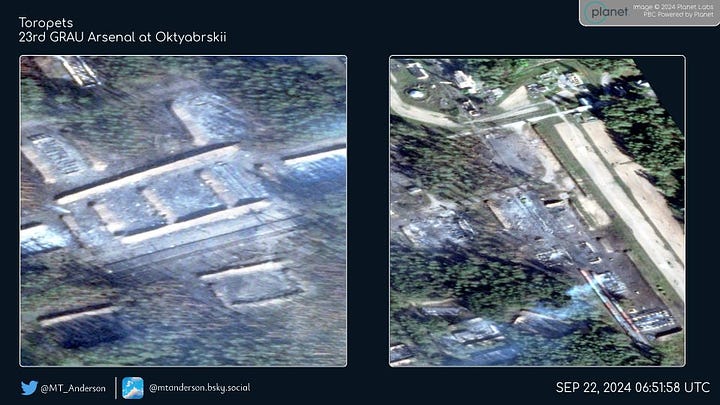
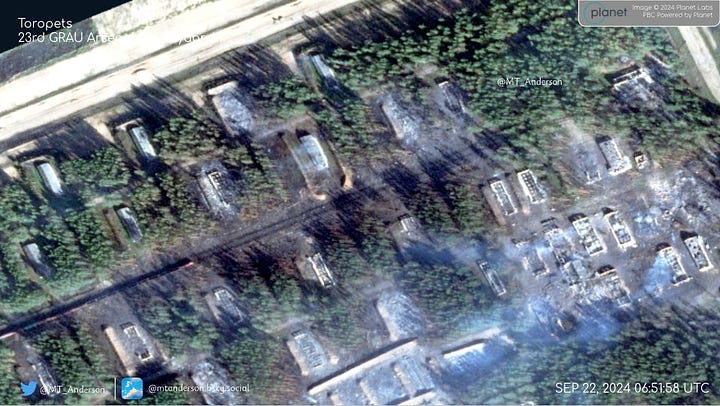
Whenever a strike doesn’t suit the West, there are always those “pesky clouds”, it seems.
So here too, we do not have clear photos of Yuzhmash.
However, there are some quite interesting eyewitness accounts, though completely unverifiable.
Firstly, this report:
In Ukraine, the SBU has completely classified the consequences of the strike by the hypersonic system "Oreshnik" on the defense plant "Yuzhmash" in Dnepropetrovsk. Despite the blockade in the Kyiv media, residents of the city began to say for the first time that "only dust" remained from the military enterprise.
Followed by this one:
"Yuzhmash is gone. It hit so hard that everyone just threw up their hands. It was like God sent us his arrows. People went to the enterprise to find out what happened - but it simply was not there. There are no workshops, only dust remains," eyewitnesses say.
According to a classmate of a local woman, at the time of the strike no one understood what had happened. The Yuzhmash workshops had been hit before: usually this was accompanied by local fires. After the arrival of "Oreshnik" there were no usual lights and many even thought it was an earthquake.
The above comes from an audio of a Ukrainian man who claims he spoke to his ex-classmate who works at the Yuzhmash plant. She allegedly told him the plant has been hit many times before, and there are always some fires which are put out and things eventually repaired. But this time the workshops were turned completely to ‘dust’ and no longer exist. Listen for yourself (first part is AI dub, then original audio):
It may seem easy to dismiss the above offhand, but then we have an official word from BBC’s article which claims the uncommonly powerful strike produced “explosions that lasted for three hours”:
How do we square the contradictory sides where images don’t appear to show overt destruction, yet there are reports of massive internal damage? The most plausibly logical explanation is that the workshops are all on lower levels. We know the plant has many levels below and was designed to withstand nuclear strikes, as mentioned in my last report. No sane production would be allowed on the top level when the plant has already been repeatedly targeted by previous Russian strikes.
As such, the hypersonic submunitions likely “sliced” through the top layers without creating too much obvious destruction, but vaporized everything further down underneath. It’s sort of akin to how some shooters don’t like to use high velocity ammo because of an effect called “over-penetration” where it actually goes right “through” a person cleanly without damaging them too much.
Similarly here the munitions may have sliced through the thin roofs through several levels of subterranean workshops, turning those to “dust” as per the above claims. The fact is, Russia obviously did not intend to destroy the entire enterprise, much of which is empty or defunct, otherwise it would have employed far more missiles and other weaponry. A nuke would not be able to destroy that entire enterprise—one of the world’s largest. As such, it’s foolish to look for massive damage over the breadth of the entire dozens-of-square-kilometer premises. Rather, there are only a few key buildings Russian likely targeted, and higher quality satellite footage of those key spots is required—but don’t expect it any time soon for the obvious reasons.
As for the precision, though we have no exact way of knowing just yet, but there is one interesting data point I overlooked in my last analysis. This analyst brought it up:
The fact that pushing Mach 10+ the small submunitions are able to retain perfect uniformity means some kind of very precise guidance system appears to be at work. These munitions would have been released likely very high up in the atmosphere, and at such speeds, there are so many powerful countervailing forces to throw them off, that only an incredibly precise guidance system—which Skibitzky mentioned earlier, if you’ll recall—could allow them to retain such uniformity down through terminal phase.
It’s not definitive proof, but it’s at least some evidence that a precision guidance system is at work.
Lastly, some new photos of the claimed recovered artifacts from the Oreshnik strike:
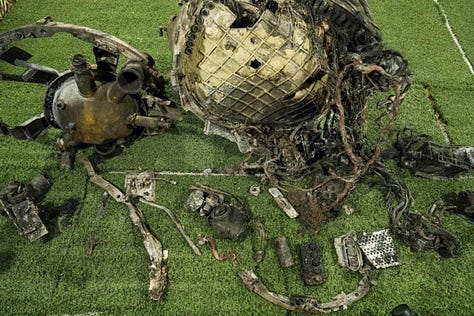
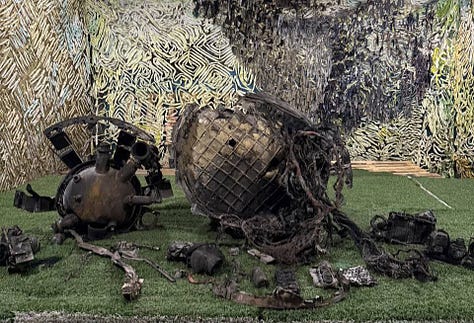

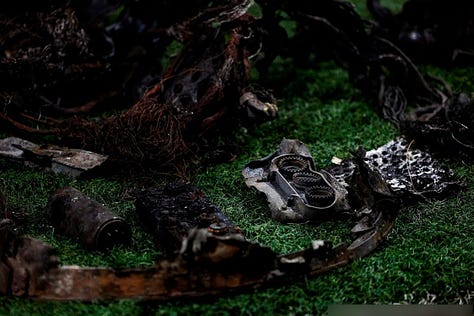
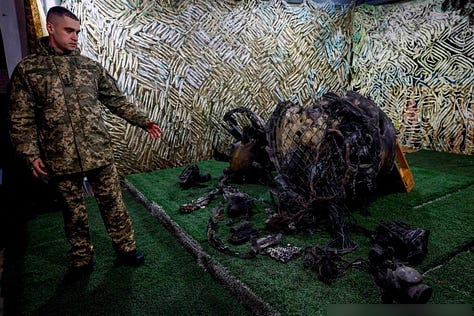
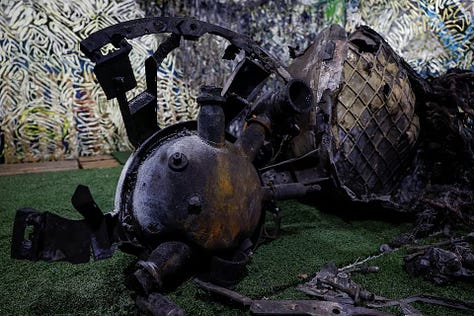
One commentator’s brainstorm:
Quick Wreck analysis of Oreshnik
Left “ball” = fuel distribution node for PBV /sat bus / missile stage >for attitude / orientation thrusters because the small fuel lines or clustered (space)engines
Right round object = fuel tank header (PBV or stage), storing fuel is important
Lack of debris suggests it was a final item responsible orienting the warhead/s , the main booster stages are disposed earlier in the flight
Its all corresponds of modern nuclear weapons, the items most likely belonged to the first 2 pic on the top
A Tass article from 2021 describing the candidate Kedr project:
A few last noteworthy videos:
A British mercenary was captured in Kursk:
He happens to be from a special signals unit that some reports claim is likely tied to British intelligence.
—
Now a German 2A4 Leopard was captured and has entered service with Russian forces.
They said German Tigers would again prowl Kursk, but in a display of poetic justice, they are now defending Kursk.
Bradleys are starting to enter service in the Russian Army as well:
—
An interesting unseen outtake from the end of Putin’s momentous speech wherein he made it clear that NATO countries could be targeted by Oreshnik next if Western escalations continue. From a behind the scenes camera, Putin could be seen ending the speech, getting up, and saying: “I think I was quite clear.”
Your support is invaluable. If you enjoyed the read, I would greatly appreciate if you subscribed to a monthly/yearly pledge to support my work, so that I may continue providing you with detailed, incisive reports like this one.
Alternatively, you can tip here: buymeacoffee.com/Simplicius





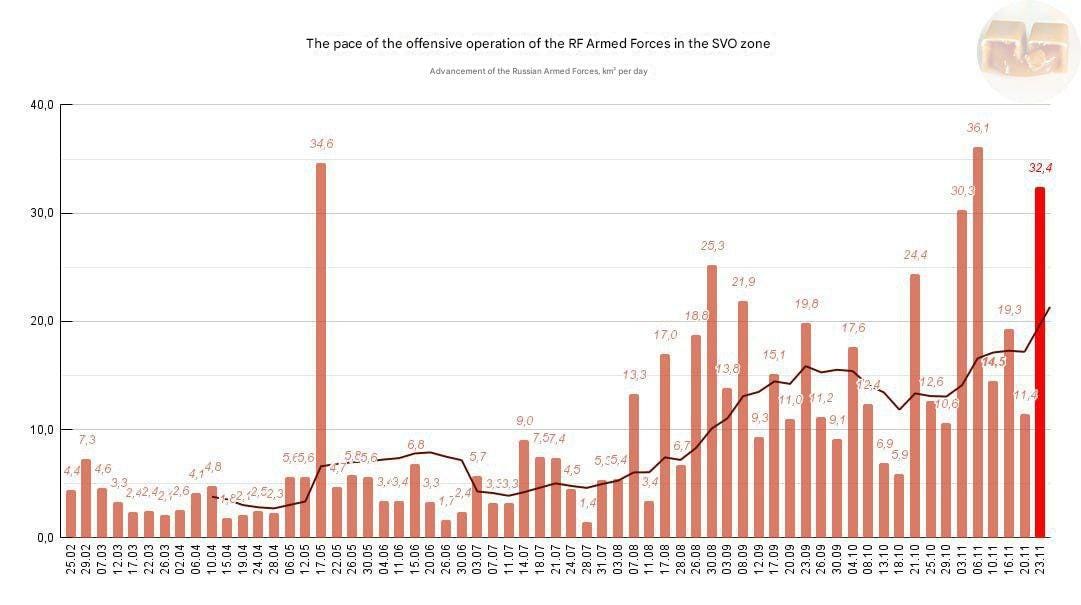
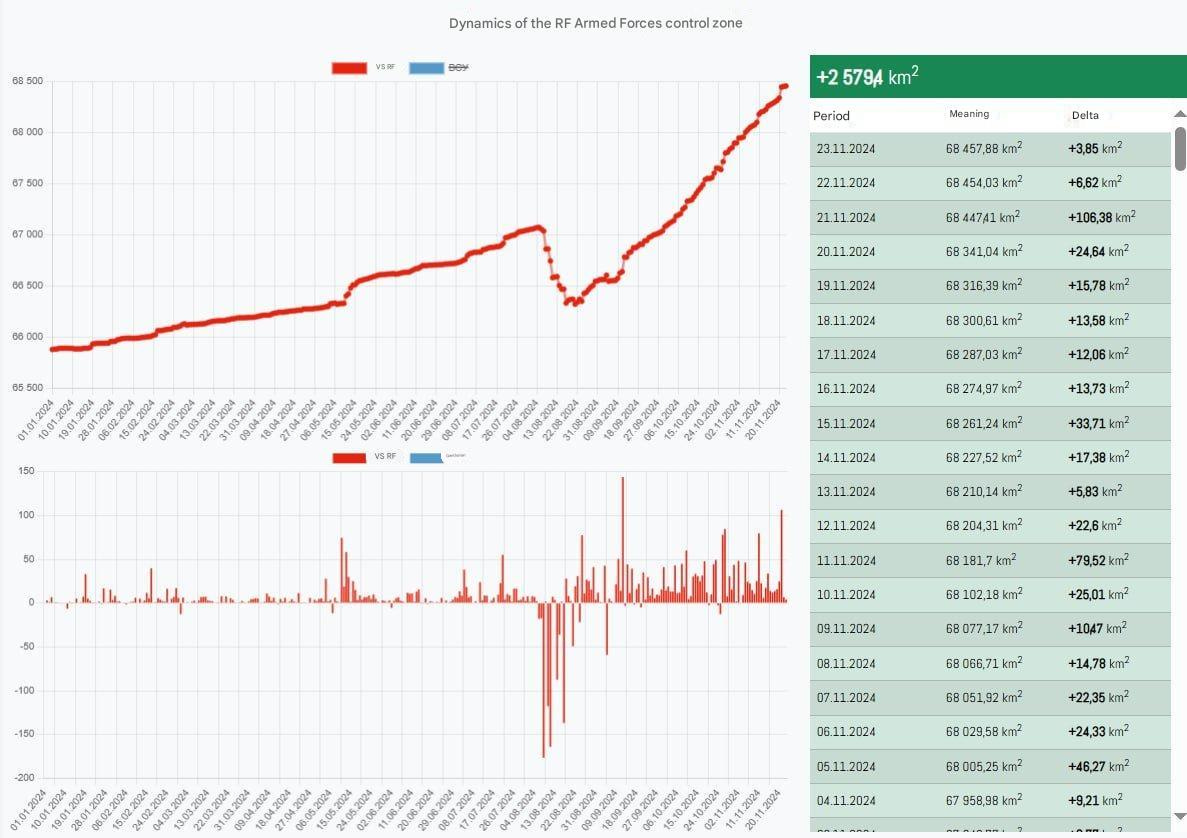

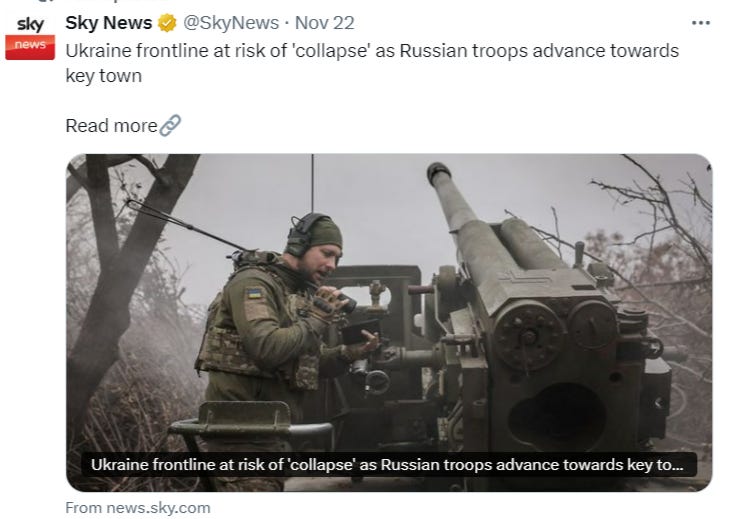
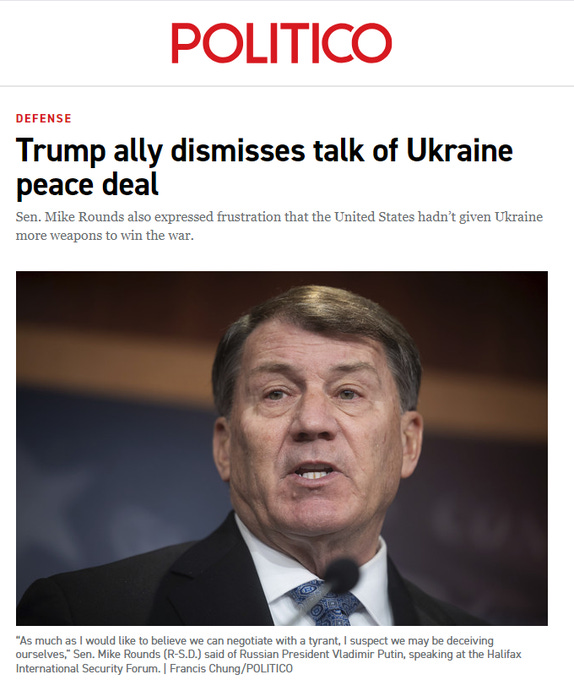


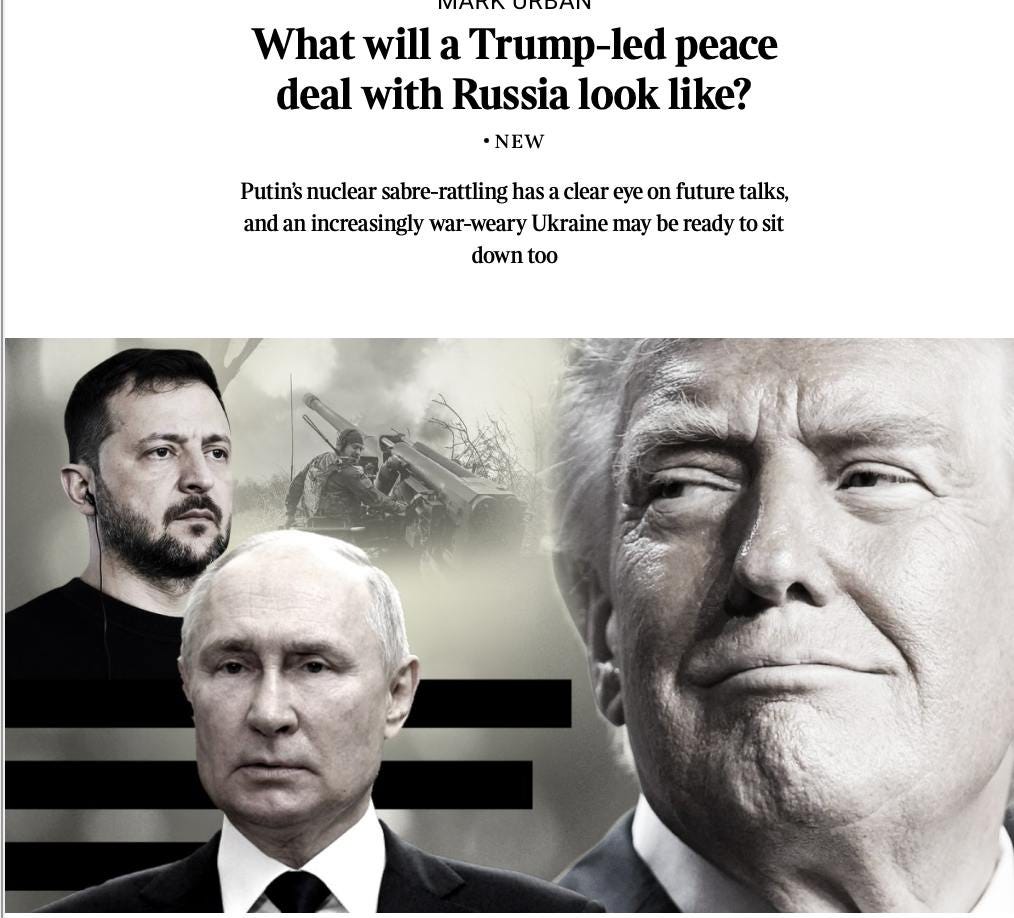

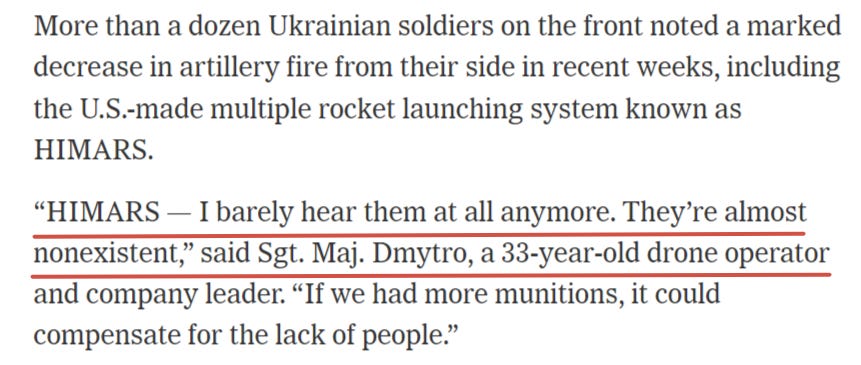
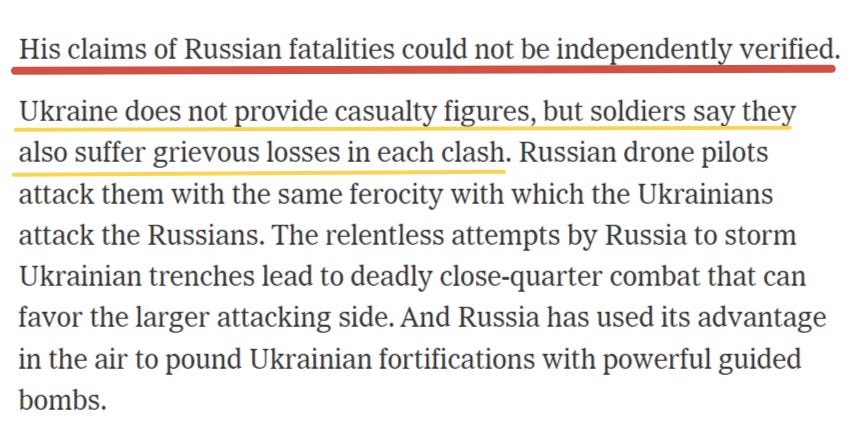
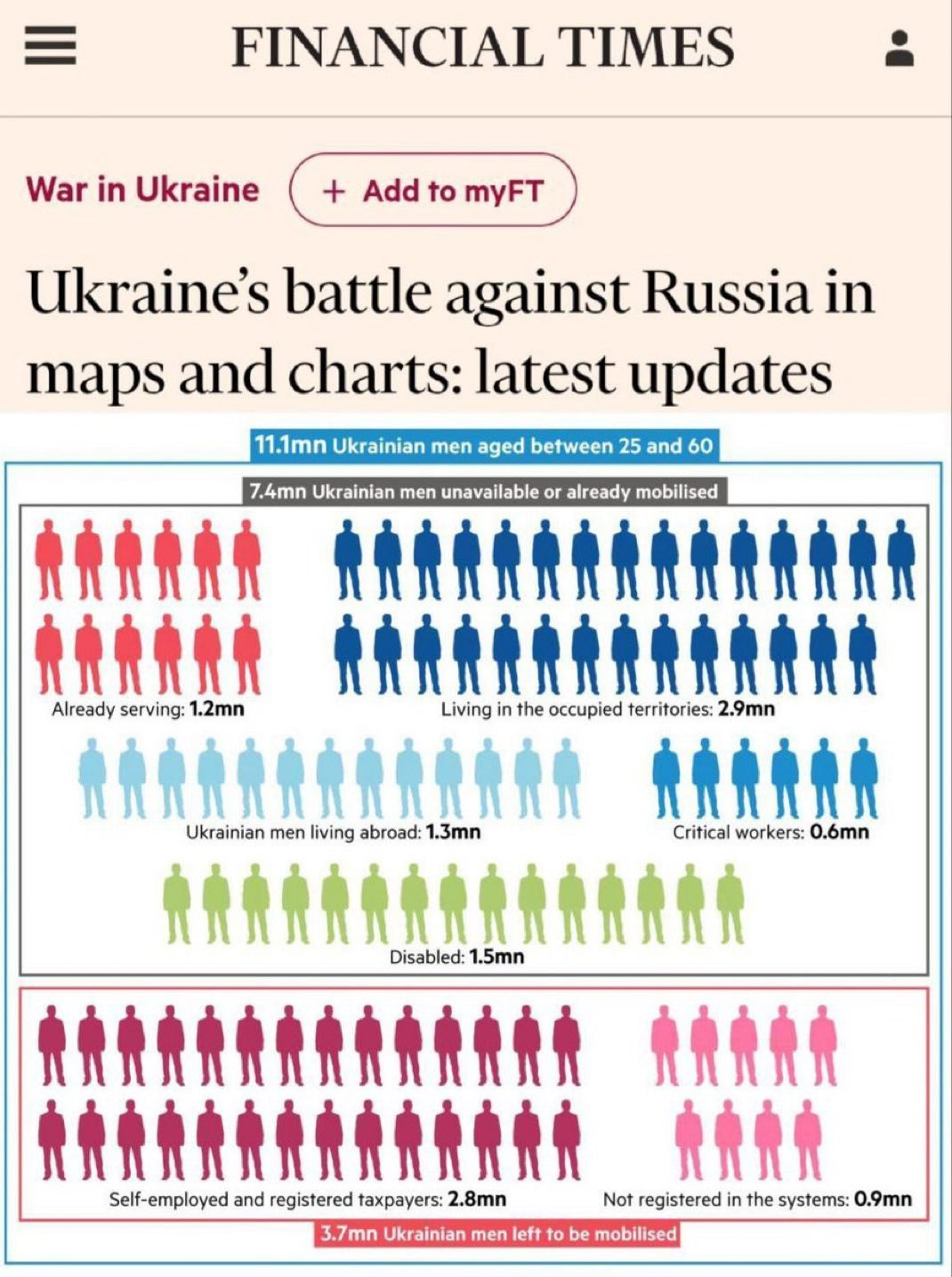

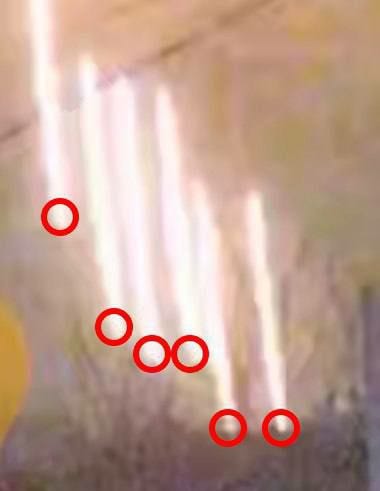
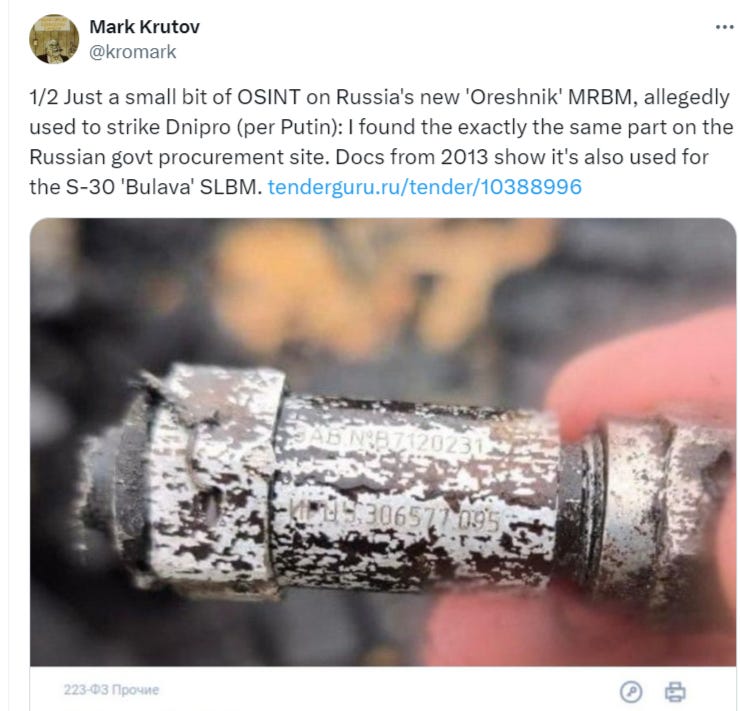
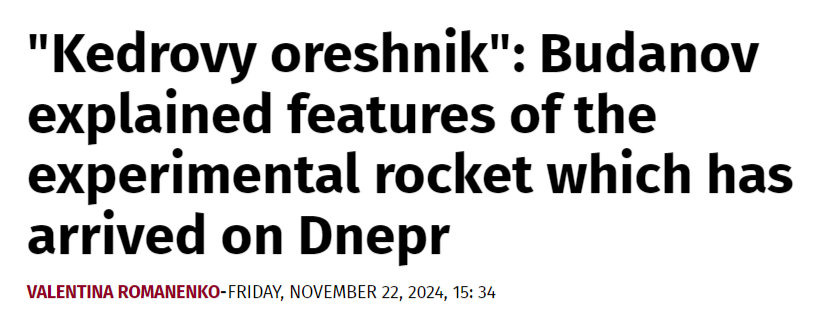
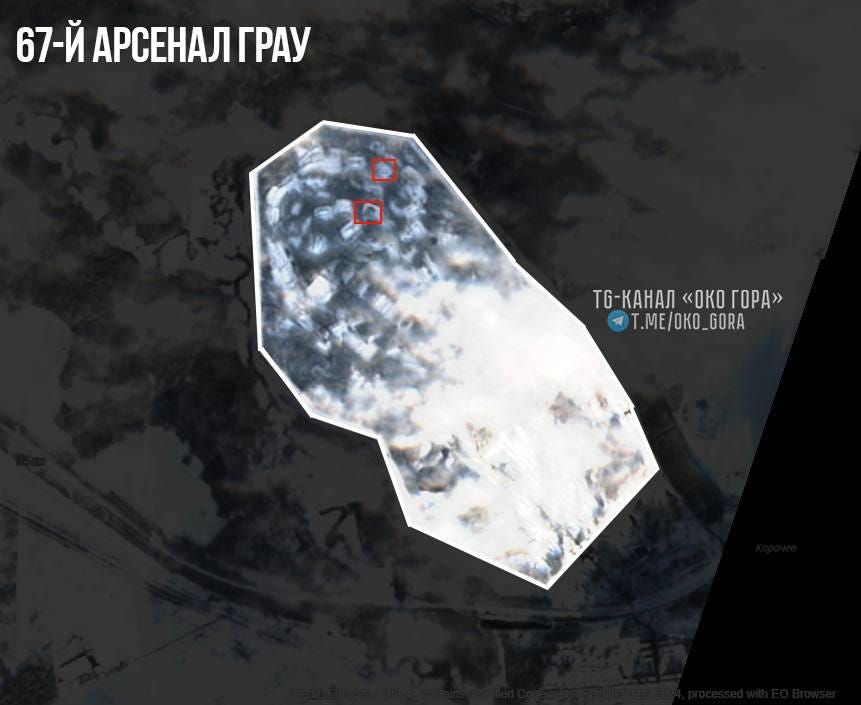
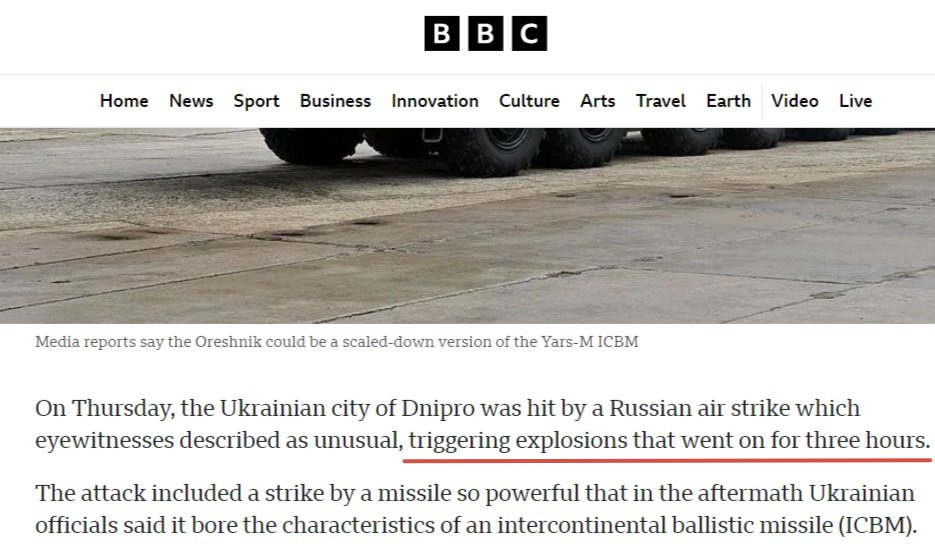
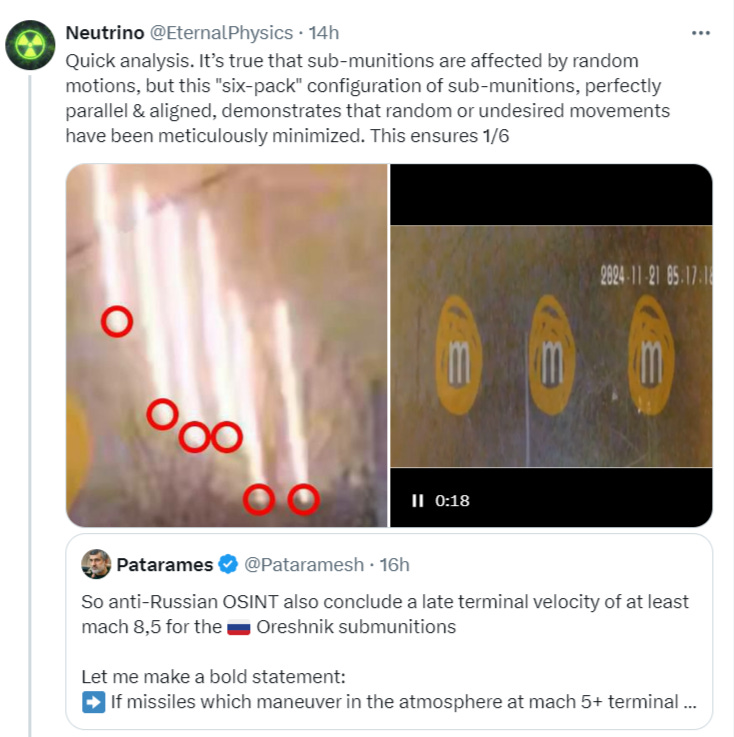
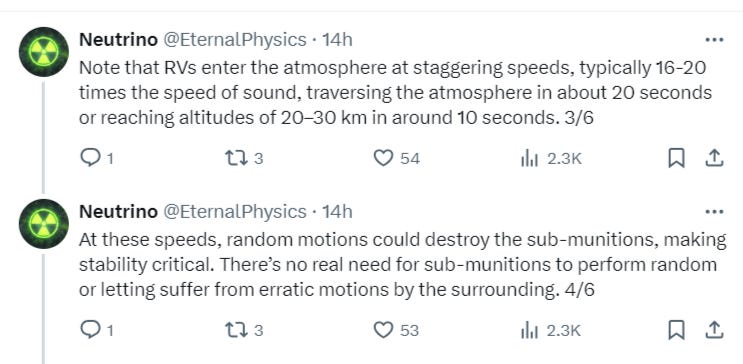
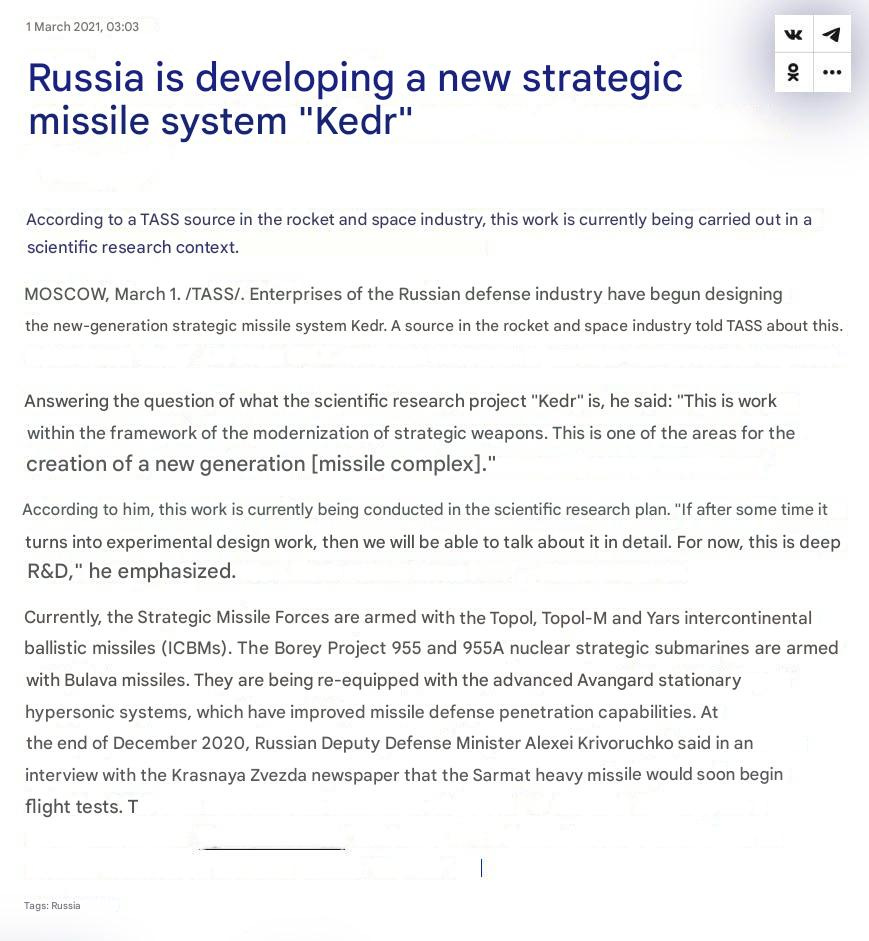


The conflict in Ukraine did not start in February 2022 of course. It did not start with the CIA-backed coup in Kiev against an elected president in February 2014 either. It did not even start with the U.S.-financed Orange Revolution in Ukraine in 2004. This conflict goes back at least to the Soviet victory over Nazi Germany in 1945 when the United States and its imperialist allies immediately responded by creating the Cold War with a newly forged imperialist instrument known then as NATO but which I now call OTAN. The Alliance deployed Ukrainian fascist collaborators to covertly attack Moscow.
After World War Two, the CIA and Nazi remnants, like spymaster Major General Reinhard Gehlen, were united in purpose along with the British MI6 to defeat the Soviet Union. What is transpiring today in Ukraine is the culmination of a systemic conflict, essentially about projecting and maintaining Western imperial power.
Russia is not bluffing. It won’t back down because of the historical sacrifices it has made already to defeat fascist tyranny – 27 to 30 million dead in WW II alone. The Russian’s pain and suffering from imperialist aggression make it defiant and resolute in a way that the Western regimes could never comprehend or emulate.
If Project Ukraine winds down, it’s not as if peace will guide the planets or love steer the stars—there’s a hint of what’s to come: the CIA has been in Taiwan since 1947, almost as long as its presence in Ukraine.
Stir it up, little darlin’
During Trump's first Presidency his foreign policy was fairly effective - more so than I thought it would be - in a large degree because he surrounded himself with insane neocon warmongers who would issue bloodcurdling threats before Trump entered the room as the cool, rational dealmaker who wanted peace. Kind of a modern take on TR's "speak softly and carry a big stick."
It seems like Trump is going to try and re-cycle this strategy. The problem is the objective factors no longer favour such a strategy; the US has been defeated militarily in Syria, Afghanistan, Ukraine, and the Red Sea. Leftist ideology is visibly rotting the heart out of the US military establishment and its attendant MIC has been shown to be incapable of producing sufficient and effective munitions. The economic power of the US is clearly waning as an unprecedented hurricane of sanctions have failed to swamp the Russian ship of state. Numerous countries are decoupling from the dollar.
This time around the neocon threats will ring hollow and when Trump enters the room it will be as a huckster used car salesman with very little of a deal to offer.
Perhaps I will be proved wrong (as I was for 45) but the outlook is not rosy.